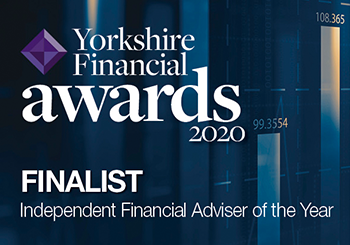How have VCTs been used in the last 25 years?

Venture Capital Trusts (VCTs) have been around for 25 years! Over those years, they’ve become an important part of investment portfolios for many people. But are they the right option for you and how could they fit into your wider plans?
Back in November 1994, then Chancellor Kenneth Clarke unveiled VCTs as part of his budget and established them the following year. The reason for doing so was to generate investment opportunities in “dynamic, innovative growing businesses”. They were designed to give individual investors a way to access venture capital investments, expanding options.
Of course, they’re not an appropriate investment choice for every investor. It’s important to understand how VCTs operate, the level of risk presented and whether it suits your overall goals before proceeding.
Getting to grips with VCTs
A VCT is an investment company that’s set up to invest in small UK businesses. These companies are often early-phase that are either unquoted or listed on the AIM, a sub-market of the London Stock Exchange. They need investment in order to develop quickly. They have the potential to deliver high returns but there’s a risk that comes with this.
You’re backing smaller companies that are typically unproven. As a result, there is a risk that the value of investments will go down.
As an incentive to investing through VCTs, the government offers tax relief. When you invest in new VCT shares, you’re entitled to claim tax incentives up to £200,000. These include:
- Up to 30% Income Tax relief on the amount invested
- Tax-free capital gains
- Tax-free dividends
Other benefits to using a VCT is that it can help you diversify your portfolio by accessing different companies to back.
But these incentives and benefits shouldn’t be the only thing you look at when deciding to invest in a VCT. Keep in mind that a VCT is a long-term investment. Values may fall and it’s likely that more volatility will be experienced than if you invested on the London Stock Exchange, for example. Carefully assess your investment risk profile before looking at VCTs.
It’s also important to note that tax treatment will depend on your individual circumstances and VCTs must maintain its qualifying status to deliver investors tax relief.
The success of VCTs
Although not suitable for every investor, VCTs have proven popular and helped some well-known companies find their feet.
According to Money Observer, individual investors have ploughed more than £8.48 billion into VCTs over the last 25 years. In the first tax year after legislation was introduced, 12 VCTs raised £160 million. By 2018/19 this had increased to 34 VCTs that raised £731 million.
Over the years, many businesses have benefited from VCT backing, including Zoopla, Secret Escapes, Five Guys and Everyman Cinemas. Some lucky investors have reaped the rewards of backing these successful companies early on. In 2018/19, VCTs paid out £294 million in tax-free dividends.
Three of those very first VCTS are still operating today. According to Money Observer calculations, if you had made a £10,000 investment at launch, and reinvested all dividends, your total returns would be:
- Northern Venture Trust: £47,837
- Albion VCT: £39,848
- British Smaller Companies VCT: £31,461
Once you factor in tax relief, the returns rise even further. Assuming income tax relief was claimed on the initial investment and subsequent dividend reinvestments the figures would be:
- Northern Venture Trust: £63,797
- Albion VCT: £52,177
- British Smaller Companies VCT: £42,680
When are VCTs suitable?
A glance at the returns certainly makes VCTs look like an attractive option for investors. But they’re not suitable for the majority of investors.
VCTs tend to be considered for investors that already have large portfolios holding mainstream investments. They can be a way to diversify a portfolio but how the risk of VCTs will adjust the overall portfolio position needs to be considered. If you have a low tolerance for investment risk, a VCT may not be right even if you have a significant amount invested elsewhere.
The tax incentive can also make VCTs valuable for investors that have used their ISA and pension allowance in full. Furthermore, it can be a way to reduce your tax bill for high net worth individuals. If this is your goal, it’s important you look at what other solutions may be open to you too.
Finally, as with all investments, putting money into a VCT should be done so with a long-term horizon. In addition to smoothing out short-term volatility, VCTs must be held for five years to permanently keep the up-front tax relief.
Please note: The value of your investment can go down as well as up and you may not get back the full amount you invested. Past performance is not a reliable indicator of future performance.






